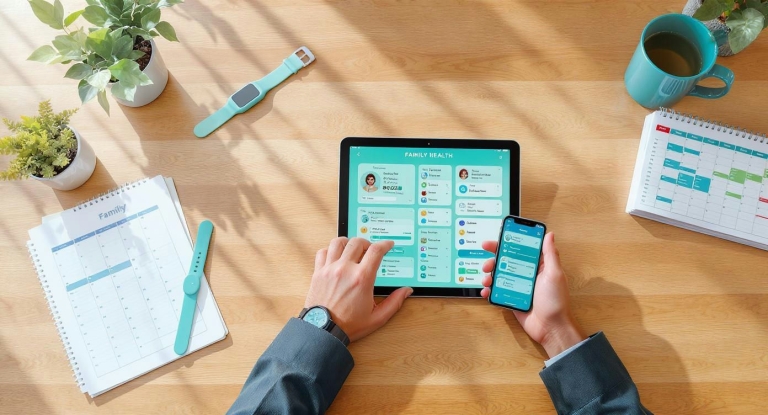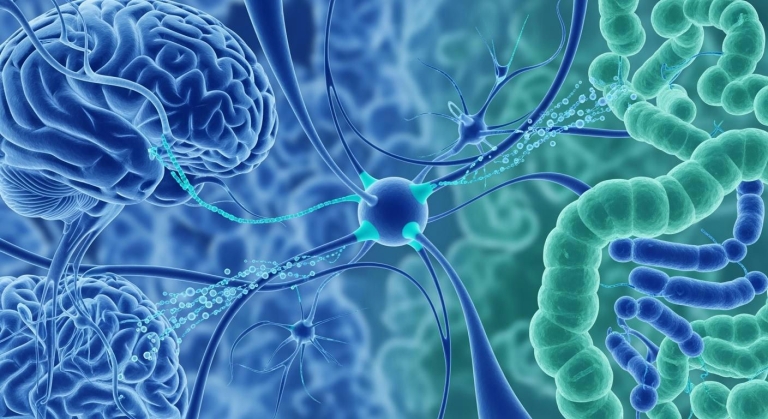Osteoporosis Prevention: Building Strong Bones Throughout Life
Osteoporosis Prevention: Building Strong Bones Throughout Life
Did you know that one in three women and one in five men in Canada will experience an osteoporotic fracture during their lifetime? Despite these staggering statistics, many Canadians remain unaware that their bone health journey begins long before their senior years. The choices made today—whether you’re 25 or 65—directly impact your skeletal strength decades down the road.
Osteoporosis, often called the “silent disease,” develops gradually over many years without obvious symptoms until a fracture occurs. The good news? This condition is largely preventable through proactive lifestyle choices and regular health monitoring. Understanding how to build and maintain strong bones throughout every life stage empowers you to take control of your skeletal health and reduce your risk of fractures later in life.
This comprehensive guide explores evidence-based strategies for osteoporosis prevention, from optimizing nutrition and exercise to understanding when screening becomes essential. You’ll discover practical steps to implement today, regardless of your age, and learn how modern healthcare approaches can support your bone health journey.
Table of Contents
- Understanding Osteoporosis: More Than Just Aging Bones
- Risk Factors: Identifying Your Bone Health Profile
- Building Peak Bone Mass: Prevention in Your 20s and 30s
- Maintaining Bone Health Through Middle Age
- Senior Years: Active Prevention and Management
- When to Consider Bone Density Testing
- Integrating Bone Health into Overall Wellness
- Practical Implementation: Your Bone Health Action Plan
- The Role of Technology in Bone Health Management
- Common Myths About Osteoporosis Prevention
- Looking Forward: Emerging Approaches in Bone Health
- Frequently Asked Questions
Understanding Osteoporosis: More Than Just Aging Bones
Osteoporosis occurs when bones lose density and become porous, fragile, and prone to fractures. Think of healthy bone as a dense honeycomb structure. With osteoporosis, the spaces within this honeycomb grow larger while the solid portions become thinner, compromising the bone’s structural integrity.
While many associate osteoporosis exclusively with elderly individuals, bone health is actually a lifelong concern. Peak bone mass—the maximum bone density and strength achieved—typically occurs by age 30. After this point, the body naturally begins losing bone mass faster than it can be replaced. This makes the years before 30 crucial for building a strong skeletal foundation.
The Hidden Impact of Osteoporosis in Canada
According to Osteoporosis Canada, this condition affects over 2 million Canadians, with fractures occurring more frequently than heart attacks, strokes, and breast cancer combined. The consequences extend beyond physical pain:
- Hip fractures result in death within one year for up to 30% of patients
- Only 40% of hip fracture patients regain their previous level of independence
- The annual cost of treating osteoporosis and fractures exceeds $3.9 billion in Canada
These sobering statistics underscore why prevention strategies deserve attention at every age. At Care& Family Health, comprehensive health assessments help identify risk factors early, allowing for timely interventions that can significantly impact long-term bone health.
Take Control of Your Bone Health Today
Don’t wait for symptoms! Our Nurse Practitioners provide comprehensive health assessments that include bone health risk evaluation.
Risk Factors: Identifying Your Bone Health Profile
Understanding personal risk factors enables targeted prevention strategies. Some factors remain unchangeable, while others respond well to lifestyle modifications.
Non-Modifiable Risk Factors
Age and Gender: Women face higher osteoporosis risk, especially post-menopause when estrogen levels drop dramatically. Men also experience bone loss with aging, though typically at a slower rate.
Family History: Having a parent who experienced hip fracture doubles your own fracture risk, highlighting the genetic component of bone health.
Ethnicity: Individuals of Caucasian or Asian descent face higher osteoporosis risk compared to those of African or Hispanic heritage.
Body Frame: Smaller, thinner individuals typically have less bone mass to draw from as they age, increasing fracture vulnerability.
Modifiable Risk Factors
Nutrition Deficiencies: Inadequate calcium and vitamin D intake throughout life significantly impacts bone density. Many Canadians, particularly during winter months, struggle to maintain optimal vitamin D levels.
Physical Inactivity: Sedentary lifestyles accelerate bone loss. Weight-bearing and resistance exercises stimulate bone formation and maintenance.
Smoking and Excessive Alcohol: Both habits interfere with the body’s ability to build and maintain bone tissue. Smoking reduces calcium absorption, while excessive alcohol impairs bone-forming cells.
Certain Medications: Long-term use of corticosteroids, some anti-seizure medications, and specific cancer treatments can weaken bones. Regular monitoring becomes essential for individuals on these medications.
Hormonal Imbalances: Conditions affecting thyroid, parathyroid, or sex hormones directly impact bone metabolism. Early detection through regular health screenings allows for appropriate management.
For those concerned about multiple risk factors, working with a healthcare provider who offers unrushed appointments can ensure thorough assessment and personalized prevention planning. Care&’s Nurse Practitioners take time to understand your complete health picture, including family history and lifestyle factors that influence bone health.
Track Your Health Metrics
Monitor calcium intake, exercise frequency, and other bone health metrics with the Care& app.
Available on iOS and Android
Unlimited Appointments
Regular monitoring is key for bone health. Our membership includes unlimited visits with no extra fees.
Building Peak Bone Mass: Prevention in Your 20s and 30s
The decades before age 30 represent a critical window for maximizing bone density. During these years, the body efficiently builds bone tissue, creating reserves that will sustain skeletal health throughout life.
Nutrition Strategies for Young Adults
Calcium Requirements: Adults aged 19-30 need approximately 1,000 mg of calcium daily. While dairy products provide excellent sources, many plant-based options exist:
- Fortified plant milks (soy, almond, oat)
- Dark leafy greens (collard greens, bok choy, kale)
- Calcium-set tofu
- Almonds and tahini
- Fortified orange juice
Vitamin D Optimization: Health Canada recommends 600 IU daily for adults under 50, though many experts suggest higher amounts for Canadians, especially during winter months. Food sources include:
- Fatty fish (salmon, mackerel, sardines)
- Egg yolks
- Fortified milk and plant alternatives
- Mushrooms exposed to UV light
Supporting Nutrients: Magnesium, vitamin K, and protein also play crucial roles in bone formation. A balanced diet emphasizing whole foods typically provides adequate amounts.
Exercise: The Bone-Building Prescription
Physical activity during young adulthood significantly influences lifelong bone strength. Effective bone-building exercises include:
High-Impact Activities: Running, jumping rope, basketball, and volleyball create forces that stimulate bone formation. Aim for at least 30 minutes, three times weekly.
Resistance Training: Weight lifting, bodyweight exercises, and resistance band workouts stress bones in ways that promote density. Include all major muscle groups twice weekly.
Balance and Flexibility: While not directly building bone, yoga and tai chi improve coordination and reduce fall risk—important for fracture prevention at any age.
Lifestyle Considerations
Beyond nutrition and exercise, several lifestyle factors impact bone health during these formative years:
- Maintain a healthy body weight (both underweight and obesity increase fracture risk)
- Limit alcohol consumption to moderate levels
- Avoid smoking entirely
- Ensure adequate sleep for optimal hormone production
- Manage stress levels, as chronic stress can impact bone metabolism
Care& App Feature: Health Metrics Tracking
Monitor your calcium intake, exercise frequency, and vitamin D supplementation with our easy-to-use tracking features. Set goals, receive reminders, and watch your progress over time.
Maintaining Bone Health Through Middle Age
The years between 40 and 65 mark a transition period where bone preservation becomes the primary goal. While peak bone mass has been achieved, strategic interventions can significantly slow bone loss.
Hormonal Considerations
For women approaching menopause, the dramatic decline in estrogen accelerates bone loss. During the first 5-10 years post-menopause, women can lose up to 20% of their bone density. This makes regular monitoring essential. A medical clinic that offers comprehensive health tracking can help identify concerning changes early.
Men experience more gradual hormonal changes, but testosterone levels do decline with age, affecting bone density. Both genders benefit from:
- Regular physical activity to support hormone balance
- Stress management techniques
- Adequate sleep for hormone regulation
- Nutritional support for hormonal health
Adjusting Exercise Routines
Middle-aged adults should modify exercise programs to balance bone stimulation with joint protection:
Lower-Impact Options: Swimming, cycling, and elliptical machines provide cardiovascular benefits while reducing joint stress. However, these activities alone don’t adequately stimulate bone formation.
Progressive Resistance Training: Gradually increasing weights or resistance maintains bone-building stimulus while respecting physical limitations. Working with qualified fitness professionals ensures safe progression.
Functional Fitness: Exercises mimicking daily activities (squats, lunges, step-ups) build practical strength while supporting bone health.
Nutrition Updates
Calcium needs increase to 1,200 mg daily for women over 50, while men maintain the 1,000 mg requirement until age 70. Vitamin D requirements may increase based on individual absorption and sun exposure. Regular blood work through an on-site laboratory can identify deficiencies before they impact bone health.
Comprehensive Blood Work & Testing
Our on-site laboratory services include vitamin D level testing and complete blood panels to identify nutritional deficiencies that could affect bone health.
Senior Years: Active Prevention and Management
Adults over 65 face the highest osteoporosis risk, but prevention efforts remain valuable at any age. The focus shifts toward maintaining mobility, preventing falls, and preserving existing bone density.
Fall Prevention Strategies
Since 90% of hip fractures result from falls, prevention becomes paramount:
Home Safety Modifications:
- Remove tripping hazards (loose rugs, cluttered walkways)
- Install grab bars in bathrooms
- Ensure adequate lighting throughout living spaces
- Consider non-slip surfaces in wet areas
Physical Interventions:
- Regular vision and hearing checks
- Medication reviews to identify those affecting balance
- Proper footwear with good traction
- Assistive devices when needed (canes, walkers)
Exercise for Balance and Strength: Tai chi has shown particular effectiveness in reducing fall risk among seniors. Other beneficial activities include:
- Chair exercises for those with limited mobility
- Water aerobics for joint-friendly resistance
- Walking programs with gradual progression
- Supervised strength training
Nutritional Challenges and Solutions
Seniors often face unique nutritional challenges affecting bone health:
Decreased Appetite: Smaller, nutrient-dense meals throughout the day can help meet nutritional needs. Focus on foods providing maximum nutrition per bite.
Medication Interactions: Some medications interfere with nutrient absorption. A healthcare provider can identify potential interactions and suggest timing adjustments or supplements.
Digestive Changes: Age-related changes in stomach acid production can impair calcium absorption. Calcium citrate supplements may be better tolerated than calcium carbonate.
Social Factors: Eating alone often leads to poor nutrition. Community meal programs or cooking clubs provide both nutrition and social connection.
Medication Management
Use the Care& app to track your medications, set reminders, and avoid interactions that could affect bone health.
Virtual Care Options
Can’t make it to the clinic? Our telehealth appointments make regular check-ins convenient, even for those with mobility concerns.
When to Consider Bone Density Testing
Bone density testing (DEXA scan) provides objective measurement of bone health, helping guide prevention and treatment decisions. Canadian guidelines recommend:
For Women:
- All women 65 and older
- Postmenopausal women under 65 with risk factors
- Women who experience fractures after age 40
For Men:
- All men 70 and older
- Men 50-69 with risk factors
- Men who experience fractures after age 40
Risk Assessment Tools
The FRAX tool, developed by the World Health Organization, calculates 10-year fracture probability based on clinical risk factors. Healthcare providers use this information to determine testing frequency and treatment needs.
For those requiring regular bone density monitoring, having a healthcare provider who offers unlimited appointments ensures consistent tracking without financial barriers. Care&’s membership model supports this proactive approach to bone health management.
Care& App Feature: Health Records
Keep track of your bone density test results and other health records in one secure location. Access your complete medical history anytime, and share with specialists when needed.
Integrating Bone Health into Overall Wellness
Osteoporosis prevention doesn’t occur in isolation—it integrates with overall health maintenance. Several chronic conditions impact bone health:
Diabetes: Both type 1 and type 2 diabetes increase fracture risk through various mechanisms. Blood sugar control becomes essential for bone health.
Cardiovascular Disease: Shared risk factors between heart disease and osteoporosis mean prevention strategies often benefit both conditions.
Inflammatory Conditions: Rheumatoid arthritis, inflammatory bowel disease, and other chronic inflammatory conditions accelerate bone loss. Anti-inflammatory lifestyle choices support both disease management and bone health.
Mental Health: Depression correlates with increased osteoporosis risk, possibly through hormonal pathways and lifestyle factors. Comprehensive healthcare addressing mental and physical health provides optimal outcomes.
Comprehensive Care Approach
At Care&, we understand that bone health is connected to your overall wellness. Our Nurse Practitioners take time to understand your complete health picture, addressing all factors that could affect your skeletal strength.
Practical Implementation: Your Bone Health Action Plan
Creating a personalized bone health strategy involves assessing current habits and gradually implementing improvements:
Week 1-2: Assessment Phase
- Calculate current calcium and vitamin D intake
- Evaluate exercise habits
- Identify personal risk factors
- Schedule healthcare appointments if needed
Week 3-4: Nutrition Optimization
- Gradually increase calcium-rich foods
- Add vitamin D sources or supplements
- Experiment with bone-healthy recipes
- Track intake to ensure consistency
Week 5-6: Movement Integration
- Start with 10-minute daily walks
- Add two resistance training sessions
- Try one balance-focused activity
- Monitor body response and adjust intensity
Week 7-8: Lifestyle Refinement
- Address modifiable risk factors (smoking, excessive alcohol)
- Improve sleep hygiene
- Implement stress management techniques
- Establish routine health monitoring
Ongoing: Maintenance and Monitoring
- Continue progressive exercise challenges
- Maintain nutritional consistency
- Schedule regular health assessments
- Adjust strategies based on life changes
Care& App Feature: Goal Setting
Set personalized health goals related to your bone health plan. Track your daily calcium intake, exercise minutes, and vitamin D supplementation with easy-to-use tools.
The Role of Technology in Bone Health Management
Modern healthcare technology enhances bone health management through various tools:
Health Tracking Apps: Monitoring calcium intake, exercise frequency, and medication adherence becomes easier with digital tools. Care&’s comprehensive health app allows patients to track multiple health metrics, including those relevant to bone health, providing valuable data for healthcare providers.
Telemedicine Consultations: Virtual appointments facilitate regular check-ins and medication adjustments without transportation barriers—particularly valuable for seniors or those with mobility limitations.
Electronic Health Records: Comprehensive digital records ensure all healthcare providers access complete bone health history, including past DEXA results, fracture history, and current medications.
Reminder Systems: Automated reminders for medications, exercises, and appointments support consistent bone health routines.
Secure Admin Chat
Have a quick question about your bone health plan? Message your provider directly through our secure chat feature.
Knowledge Base
Access evidence-based articles and resources about bone health directly through the Care& app.
Common Myths About Osteoporosis Prevention
Dispelling misconceptions helps individuals make informed decisions about bone health:
Myth: Only elderly women get osteoporosis
Reality: While more common in older women, osteoporosis affects all genders and can begin developing in middle age or earlier.
Myth: Calcium supplements alone prevent osteoporosis
Reality: Effective prevention requires combining adequate calcium with vitamin D, exercise, and overall healthy lifestyle choices.
Myth: Once you have osteoporosis, nothing helps
Reality: While prevention is ideal, various treatments can slow progression and reduce fracture risk even after diagnosis.
Myth: Weight-bearing exercise must be high-impact
Reality: Even moderate activities like brisk walking provide bone benefits, especially when combined with resistance training.
Looking Forward: Emerging Approaches in Bone Health
Research continues advancing our understanding of osteoporosis prevention and treatment:
Genetic Testing: Identifying genetic markers for osteoporosis risk may enable earlier, more targeted interventions.
Novel Exercises: Virtual reality balance training and whole-body vibration platforms show promise for improving bone density and reducing fall risk.
Nutritional Discoveries: Research into lesser-known nutrients like silicon and boron may expand dietary recommendations for bone health.
Personalized Medicine: Treatment approaches increasingly consider individual genetic profiles, lifestyle factors, and health conditions for optimal outcomes.
Ready to Take Control of Your Bone Health?
Care& offers comprehensive healthcare with no time limits, same/next-day appointments, and advanced technology to support your bone health journey.
Experience healthcare that puts your well-being first.
Frequently Asked Questions
Can osteoporosis be reversed once diagnosed?
While osteoporosis cannot be completely reversed, appropriate treatment can significantly slow progression and reduce fracture risk. Medications combined with lifestyle modifications help strengthen existing bone and prevent further loss. Early intervention provides the best outcomes, making regular monitoring through a medical clinic essential for those at risk.
How much calcium is too much?
The upper limit for calcium intake is 2,500 mg daily for adults under 50 and 2,000 mg for those over 50. Excessive calcium from supplements may increase kidney stone risk and potentially affect heart health. Focus on getting calcium from food sources first, using supplements only to fill gaps. A healthcare provider can help determine appropriate supplementation based on dietary intake and individual needs.
Does coffee consumption affect bone health?
Moderate coffee consumption (up to 3-4 cups daily) has minimal impact on bone health for individuals with adequate calcium intake. However, excessive caffeine can interfere with calcium absorption. Adding milk to coffee provides calcium while enjoying your daily brew. Those concerned about bone health should ensure they’re meeting calcium needs regardless of coffee habits.
Are plant-based diets adequate for bone health?
Well-planned plant-based diets can absolutely support strong bones. Key considerations include ensuring adequate calcium from fortified plant milks, leafy greens, and legumes; obtaining vitamin D through fortified foods or supplements; and including protein-rich plant foods. Nutrition counseling can help optimize plant-based diets for bone health, ensuring all necessary nutrients are included.
When should men be concerned about osteoporosis?
While men develop osteoporosis later than women, they shouldn’t ignore bone health. Men over 50 with risk factors like family history, low body weight, smoking history, or certain medications should discuss screening with their healthcare provider. Since men often remain undiagnosed until fractures occur, proactive monitoring through regular health assessments helps identify problems early when interventions are most effective.
Less Wait Time, More Face Time
At Care&, we believe in providing the time and attention your health deserves. Our appointments are never rushed, allowing for thorough discussions about your bone health concerns.
Disclaimer: This article is for informational purposes only and does not constitute medical advice. Always consult with a qualified healthcare provider for personal medical guidance. The information provided is general in nature and may not apply to individual circumstances.







